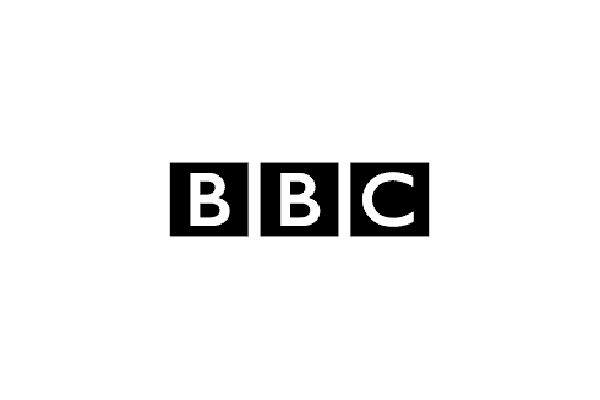- >
- Credit Cards>
- Student credit cards
Compare our best credit cards for students
Get extra protection with a student credit card

Check eligibility and find a student credit card in minutes

What is a student credit card?
A student credit card is specifically designed for individuals enrolled in a UK university with limited or no income.
As a student, managing finances can often be challenging, and a student credit card can provide flexibility during times when cash is tight. Not only can they help you manage your day-to-day expenses, but they also offer a valuable opportunity to build your credit history – something that's crucial when it comes to major future borrowing, such as applying for a mortgage.
Typically, student credit cards come with lower credit limits and higher interest rates. For this reason, they are best suited for covering everyday purchases, as long as the balance is paid off in full each month to avoid unnecessary interest charges.
When used responsibly, student credit cards can be a helpful financial tool. In addition to providing extra protection on your purchases, they can offer rewards like cashback or loyalty points.
How do student credit cards work?
If you’re thinking of applying for a student credit card, here’s how the process works:
Apply for your student credit card: You can often do this through an online form on the provider’s website, and will need to supply a few personal details.
Get approval and receive your card: Once you’re approved, your credit card should arrive within the next week and you’ll then need to activate it.
Spend on your credit card: Once activated, you can use your credit card to make purchases, but be sure to stay within your credit limit.
Pay off your balance each month: You must make at least the minimum monthly repayment, but aim to pay off the whole balance to avoid paying interest.
Student credit cards vs overdrafts
Student credit cards differ from an overdraft or buying something with a buy-now-pay-later service like Klarna or Clearpay. Here are the benefits of a student credit card:
Purchase protection
Consumer credit laws mean that if you buy something on your credit card worth more than £100 and up to £30,000, the card provider provides protection.
If there's a problem with your purchase, and the seller lets you down, you can get a refund from your credit card provider instead.
You don't need to buy the whole item with your card - even if you just pay £1 of the price using your credit card, you can claim the full amount back if there’s a problem (assuming the full purchase price is over £100 and no more than £30,000).
Interest-free period
Another benefit of using a credit card is that no interest is charged on your purchases for the first 50 days or so.
However, be aware that if you don’t clear your credit card balance in full each month, rates of around 25% a year on average are applied to the remaining debt.
Boost your credit score
Credit cards can also help you improve your credit score, provided you use them sensibly. You can do this by ensuring you don’t exceed your credit limit and repaying your credit card balance in full and on time.
Lenders, landlords and even some employers check your credit history to work out how responsible you are with cash before making you an offer, so any evidence of this will work to your advantage. Building up good credit can also help you get better deals on mortgages and loans in the future.
Limitations of a student credit card
As well as the benefits, there are also a number of downsides. These include:
Lower credit limits
Credit cards for students might offer lower credit limits compared to standard cards, so you might not be able to spend quite as much as you were hoping. But on the plus side, this can prevent you from building up too much debt.
Higher interest rates
Your student credit card might also have a higher interest rate compared to a standard card. This means you’ll pay more if you can’t afford to clear your balance each month.
Fees
If you miss repayments, you’ll be charged a fee, and it can also have a negative impact on your credit rating. There might also be fees for using your credit card abroad and withdrawing cash.
Finding the best student credit card for you
The best student credit card will depend on what you're planning to use it for.
That's because while all cards have some things in common, such as extra purchase protection, their other features vary wildly.
If you want the lowest interest rate on your credit card, for example, you might find the best deal with your student current account provider.
But if you want to spread the cost of purchases interest free, you'll need to compare cards to see what is on offer elsewhere.
Other perks could also work well for you. If you have a good credit rating, there are cards out there that offer free use overseas and air miles, as well as discounts and cashback.
Some standalone credit cards that can be suitable for students even come with freebies attached when you take them out, in the same way student bank accounts do.
We are classed as a credit broker for consumer credit, not a lender.
How providers assess your eligibility for a student credit card
To be eligible for a student credit card, you need to:
Be at least 18 years old
Be a UK resident
Be enrolled in a course at a UK university
When considering your application for a credit card, providers need to decide two things:
Your credit limit - the maximum amount they will let you borrow
The APR - the interest rate they will charge on your borrowing, plus any fees
For this, they consider three factors:
Your income. As a student, you might not have a job, and your income could be low. As a result, many providers do not give much weight to your income. They also commonly factor in your student loans as part of your income.
Your credit score. Being a student, you’re not likely to have much of a credit history, so providers don’t have much to go on when judging how responsible you are with debt. This is why providers lower their risk by offering lower credit limits for student credit cards.
Existing debt. As a student, you are unlikely to have any existing debt other than student loans. However, if you’ve had a current account for a few years and have never used your overdraft, this could work in your favour.
Expert student credit card tips
Automate it: By setting up a Direct Debit from your current account to clear the balance of your card each month, you will never miss a payment
Cash costs more: Withdrawing cash on your card from an ATM, known as a cash advance, should be avoided as you’ll be charged high fees and high interest
Use it for your deposit: As long as your purchase costs more than £100 and up to £30,000, you get full purchase protection no matter how much of the purchase price is paid on a credit card. So using it to cover the deposit of a holiday covers you for the entire trip.
Little and often to boost scores: If your goal is to build your credit rating, the best thing you can do is to make regular, small purchases and repay the balance in full each month.
Check twice, apply once: Every formal credit application is recorded and shared with other lenders. Making lots of applications in a short time can make you look desperate for money and actively hurts your chances of being accepted. When you use an eligibility tool, however, your search won’t be shared with anyone, and you’ll be able to see how likely you are to be accepted before you apply.
How to manage your cash effectively as a student
When you’re a student, you’re likely to be relying on student loans and any extra cash you can earn from a part-time job. But that money only goes so far.
For this reason, it’s easy to get tempted by credit products such as student overdrafts and credit cards and rely on them to get by. But doing so can mean your debt can quickly spiral out of control.
Here are a few things you can do to avoid getting into debt:
Make a budget to understand how much you have left over each month once you've covered your living expenses
If you’re spending more than you have coming in, look for areas where you can cut back rather than using your overdraft or credit card to fill the gap
Carry out regular price comparisons for bills such as your mobile phone and broadband
Take advantage of student discounts
How does an eligibility checker work?
As a student, it’s more important to use eligibility tools like this found through at partners at Uswitch. This is because you’re probably looking for your first credit card and may be unsure which card to apply for.
Eligibility tools will match you with the credit cards you're likely to get based on your circumstances as a student.
It uses a “soft search” credit check so your credit score will not be affected, and it saves you from applying for credit cards you can’t get. As a result, you’re less likely to end up with a rejected application.
A rejection not only damages your credit score, but you’ll have to wait at least three months to apply again. Multiple applications in quick succession also hurt your credit history.
Being a student, you’re already building your credit history from scratch, so a negative mark on your credit report from the start would be a significant setback. It’s best to avoid that at all costs.

Check eligibility and find a student credit card in minutes

Student credit cards FAQs
Does my student loan count as income?
Yes, student credit card providers will usually count your student loan as well as your salary from your job if you have one.
Do I have to have the same student credit card as my current account?
Some banks will only offer a student credit card to people who have a student current account with them - however, that doesn't mean you have to take one out. Other providers offer credit cards to anyone who qualifies, no matter who they bank with.
How do I get my first card?
You’ll need to be at least 18 years old and ideally in good financial shape to get your first card. Here is how to find a card that’s more likely to accept you.
What happens to your student credit card once you graduate?
When you graduate and leave your course, you will still usually be able to use your student credit card. However, if you have managed your credit well, you might now qualify for a credit card that offers better benefits such as cashback or interest-free purchases, or a higher credit limit or lower APR. So, it could be worth switching to a more competitive deal.
What is a credit limit?
A credit limit is the maximum you can owe on your card at any point. It’s set by your provider when you apply. Here is how a credit limit works and how much it costs if you exceed it.
Does my credit record matter?
Yes, your credit record does matter as it helps lenders decide whether to accept you as well as what APR and credit limit to offer.
Can I use a balance transfer?
Yes, you can use a balance transfer, but not many student credit cards offer them. These cards offer 0% balance transfers.
Are my purchases protected?
Yes. Credit card providers may offer their own protection services as well as protection through Section 75 and the Chargeback scheme.
How should I repay my credit card?
Paying the full amount by Direct Debit means you never miss a payment or pay interest. Here are all the ways to repay.
Student credit cards jargon buster
Balance
Your credit card balance is the amount of money you owe your credit card provider. In other words, it's the amount you borrowed using your credit card to buy goods and services. It's also sometimes referred to as your credit card debt.
Cash withdrawal
Withdrawing money from an ATM on a credit card is known as a cash advance, and it nearly always attracts a cash withdrawal fee, usually of around 3%. In addition, interest is charged on cash withdrawals from the day you take the money out, sacrificing your standard interest-free period.
Several other transactions - including buying stocks and shares, foreign currency and lottery tickets - are frequently treated as “cash-like” transactions by card providers and have the same rules and fees applied to them.
Credit limit
Your credit limit is the amount you can borrow on your credit card at any one time. If you exceed this amount, you can be charged a fee - typically £12 - and it can leave a mark on your credit report.
You won’t usually find out your credit limit until the end of an application process - although you can ask your provider to increase – or decrease – your credit limit at any time.
Credit limits are set based on your credit history and your earnings.
Once you've reached your credit limit, you need to make a payment to bring down your balance before you can use the card again. Find out more in our guide to credit limits.
Credit report
Your credit report is your history of borrowing and paying bills over the past few years. Lenders send this information to one or more of the three credit reference agencies, which compile reports on UK residents.
Before deciding whether to let someone borrow, lenders check your report from one or more of the agencies. You can request a copy of your credit reports to ensure there are no mistakes on your file, request changes if you spot one and add notes explaining any missed payments.
Credit score
Your credit score is calculated based on your credit history. Each credit reference agency has its own method of calculating this.
Your credit score will go up for things like making payments on time and down for things like being late or defaulting on a loan. Typically, the higher your score, the more likely you are to be offered a lower rate of interest or higher credit limit.
There is no absolute pass or fail mark attached to a credit score, with each lender making its own decision on what it considers acceptable.
Default
If you miss a few payments, generally between three and six, your credit card provider will send you a default notice, giving you at least 14 days to pay the amount stated on the notice.
Court action could be used to recover the debt, and if you fail to make the payment, your account will be “defaulted”, meaning you won’t be able to use your credit card anymore. It is possible that your provider may have already blocked spending on your account after the first couple of missed payments. A record of the default will also stay on your credit report for six years, making it harder to get any form of credit throughout this time.
Direct Debit
A Direct Debit is when you give a company permission to take payments automatically from your bank account. It decides the amount, but you are free to cancel the arrangement. For example, you can set up a Direct Debit to pay off your credit card. This could be for the minimum amount due, a fixed sum, or the entire balance.
Eligibility criteria
Minimum eligibility criteria define the attributes the provider expects customers to have before offering them a product. They’re designed to help customers understand if they should proceed with an application.
Meeting the minimum eligibility criteria is not a guarantee of approval. Eligibility criteria include factors such as age, salary and sometimes other details, depending on the product.
Foreign transaction fees
If you buy something abroad or from an overseas website, you are likely to be hit with a foreign transaction fee, which is often around 3% of the total payment.
Some credit cards charge no foreign transaction fees and are designed for use abroad. However, cash withdrawals tend to incur an additional cost, whether at home or abroad. The exchange will be based on Mastercard or Visa currency rates (depending on who issues your credit card).
Hard credit check
If you’ve made an application for credit, such as a credit card, loan or mortgage, lenders will carry out an in-depth check of your credit report, known as a hard credit check.
This is a detailed look into your financial history, especially your borrowing history, so a lender can see your track record of repaying money you've previously borrowed.
A hard check will show any negative marks on your credit report, like overdue payments, missed payments, previous credit applications and even bankruptcies.
Every time a hard check is carried out, it leaves a mark on your credit report, which can hurt your credit score.
Interest-free credit
Interest-free credit cards allow you to either transfer a balance, make purchases or transfer cash to a current account without paying any interest on your balance for a set period. However, you must keep making at least the minimum monthly repayment during this time.
Once the 0% deal is over, you will be charged interest on any remaining debt at your standard APR. With balance transfers and money transfers, you will usually have to pay a transfer fee.
Introductory offer
Credit card introductory offers include bonus reward points, extra cashback, 0% on balance transfers or 0% on purchases.
Introductory offers are used to attract new customers, but once they expire, they revert to the standard offer or rate. When this happens, you should check if you’re still getting the best deal or whether you need to switch to a different credit card.
Minimum monthly repayment
Every credit card has a minimum monthly repayment amount set out in its rules, which you can find in the summary box.
The minimum payment is calculated by working out what interest you've built up over the past month and then adding a small percentage of your total balance. If you have a small overall balance, there might be a fixed sum instead - for example, £5.
As minimum monthly repayments are set at such low levels, it’s best to pay off more than this each month if you can. You’ll clear your debt faster and pay less interest too.
Soft credit check
A soft credit check is a top-level view of your financial history. It lets lenders assess you for their offers and can show you what you could be eligible for.
Although a soft credit check is recorded, it doesn’t leave a mark on your credit file. This means that while you can see soft checks when you look at your own report, lenders can't. A soft credit check won’t impact your credit score, but you’ll be able to see if anyone has checked your credit history.
In certain industries, some employers will perform a soft credit check if you’ve recently applied for a job with them.
Didn’t find what you were looking for?
Below you can find a list of our most popular credit cards:
Found the Perfect Pension with Ease

Excellent

Amazing experience even though it…







